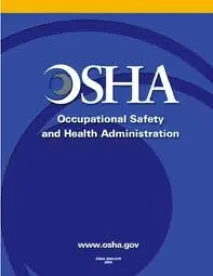Last month we celebrated the second anniversary of the Occupational Safety and Health Administration’s (OSHA) memorandum to its regional offices on “Employer Safety Incentive and Disincentive Policies on Practices”. In the memo, the Agency’s then-career Assistant Secretary of Labor, Richard Fairfax, articulated OSHA’s position that employer safety incentive programs, policies and practices can constitute unlawful discrimination in violation of OSHA and/or the requirement of OSHA’s record keeping regulation that employers insure that their employees have an avenue by which to report work-related injuries and illnesses.
The kinds of incentive programs OSHA hates are those that the Agency (and unions) referred to as “blame the worker” safety programs. “Blame the worker” safety programs are those that punish employees for being injured or for reporting their injuries. OSHA’s definition of “punishment”, however, is a bit broader than that of the man on the street. It includes, for instance, an employer’s failure to give its employees things that otherwise would have been given them had no employee been injured on the job or reported any such injury.
For example, the memorandum provides:
… An employer might enter all employees who have not been injured in the previous year in a drawing to win a prize, or a team of employees might be awarded a bonus if no one from the team is injured over some period of time period. Such programs might be well-intentioned efforts by employers to encourage their workers to use safe practices. However, there are better ways to encourage safe work practices, such as incentives that promote worker participation in safety-related activities, such as identifying hazards or participating in investigations of injuries, incidents or “near misses”.
… If an employee of a firm with a safety incentive program reports an injury, the employee, or the employee’s entire work group, will be disqualified from receiving the incentive, which could be considered unlawful discrimination.
… [I]f the incentive is great enough that its loss dissuades reasonable workers from reporting injuries, the program [also] would result in the employer’s failure to record injuries that it is required to record…
Whether employers believe OSHA’s policy to be reasonable or not, OSHA’s compliance officers are reviewing safety incentive programs as part of inspections of all kinds. Several citations nationwide have issued under the policy, and at least two are working their way through the contest/appeal process. What the Occupational Safety and Health Review Commission or the courts ultimately will do with those citations is open to speculation. But, unless an employer wants to be the subject of a test case, it would be wise to review any safety incentive program it has for any elements of the kind OSHA hates and, to the extent feasible, modify the program.
The employer should ask:
-
Might (not does, but might) the program I have incentivize my employees not to report on-the-job injuries or illnesses?
-
Does my program focus just on the fact that an injury or illness occurred on the job or was reported, or does it focus instead on the conduct that led to the injury or illness?
-
Does my program punish or reward employees who cause near misses, as well as those who report accidents and injuries?
-
Are near misses treated as being as important an element of my program as reported injuries and illnesses are?
Incentive programs that focus only on the fact of injury or illness are the riskiest under OSHA’s policy. An employer’s focus should be on an employee’s underlying conduct – or the underlying conduct of an employee team member – to pass muster under OSHA’s policy. Programs that focus on employee conduct also tend to be the most effective, even if they are a bit more cumbersome to administer because they require more information and discretion.



 />i
/>i

